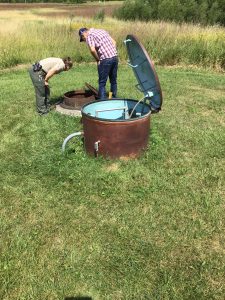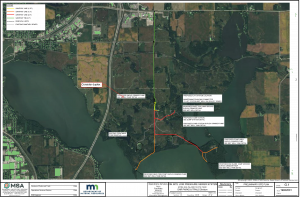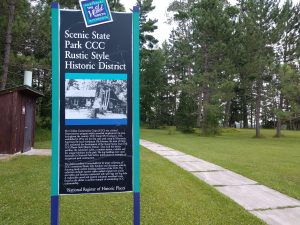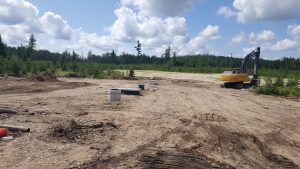Myre-Big Island State Park in south-central Minnesota has a little something for everyone: trails around oak savannas and prairie grasslands, migrating waterfowl, birdwatching opportunities, a glacial esker, and Big Island — 116 acres of maple and basswood forest. To protect the natural resources in and around this 1,700-acre park, a wastewater collection and treatment system was constructed in 1970 and expanded in the early 1980s but has since outgrown its system capacity and performance.
When the Minnesota DNR and the Division of Parks and Trails recognized the need to upgrade this aging system, MSA was chosen to first provide predesign services in order to determine the most cost-effective options to repair or replace the infrastructure and then to provide full design of the replacement system.

MSA began by performing extensive field inspection and survey collection of the existing gravity sewer system as well as reviewing manhole conditions before compiling a sewer evaluation report for the DNR. This report determined that the underground system was in acceptable condition, however, the manhole structures were located in seasonally wet locations which allowed excessive amounts of inflow to occur. Undesirable openings were prevalent enough that various wildlife was able to enter the structures as well. MSA then provided a facility planning document that met MPCA requirements for system improvements, addressing such topics as existing wastewater flow and loadings, an evaluation of inflow and infiltration, and projections of future flow and loading numbers with an understanding of potential expansion plans for the park.
MSA then developed potential alternatives to rehabilitate or replace the existing system, ultimately delivering three treatment alternatives, three collection system alternatives and two system expansion alternative options. Along with providing the DNR an overview of construction, operational and lifecycle costs for each, MSA also compiled a non-monetary assessment to address ease of operation, treatment performance, mechanical reliability, park visitor disturbance and natural resource impacts.

Together, the DNR and MSA determined that a regional treatment connection with the City of Albert Lea should be pursued. MSA was selected in 2022 to lead the design for the system upgrades, including construction of a new low-pressure collection system and decommissioning of the existing treatment pond.

A new force main route of 11,900 feet will connect the park to the City’s existing sewer line and an existing compromised gravity sewer collection system will be replaced with approximately 10,600 feet of a new low-pressure system, employing grinder pump stations located at each wastewater source. The project also includes the construction of a new main lift station, odor control and flow monitoring systems, electrical extension and controls, septic tanks and a replacement RV dump station.
The work is slated to be completed by the end of 2022 and will position Myre-Big Island State Park to continue providing visitors and campers with a pleasant outdoor experience for decades to come.



